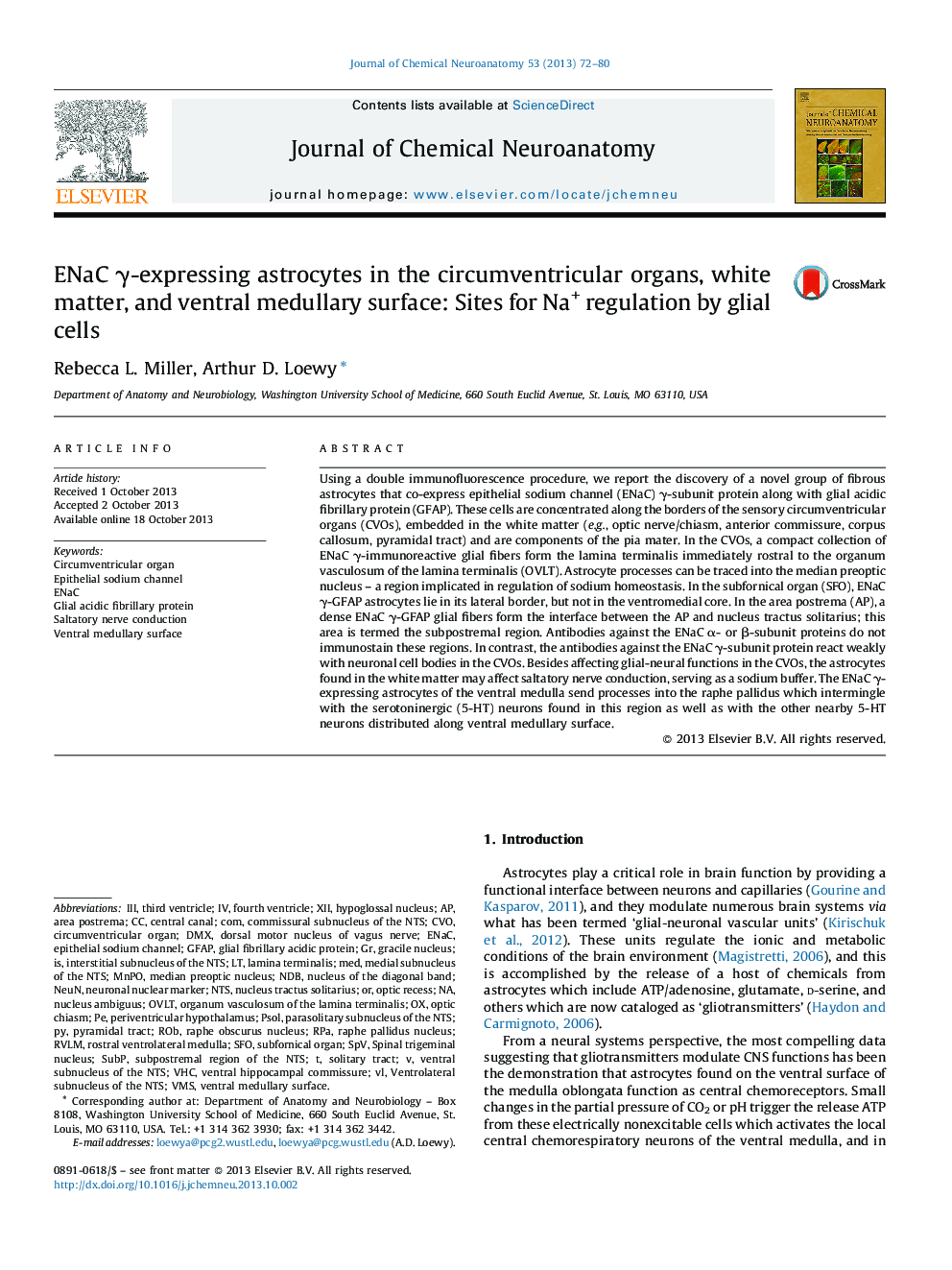| Article ID | Journal | Published Year | Pages | File Type |
|---|---|---|---|---|
| 1988881 | Journal of Chemical Neuroanatomy | 2013 | 9 Pages |
Abstract
Using a double immunofluorescence procedure, we report the discovery of a novel group of fibrous astrocytes that co-express epithelial sodium channel (ENaC) γ-subunit protein along with glial acidic fibrillary protein (GFAP). These cells are concentrated along the borders of the sensory circumventricular organs (CVOs), embedded in the white matter (e.g., optic nerve/chiasm, anterior commissure, corpus callosum, pyramidal tract) and are components of the pia mater. In the CVOs, a compact collection of ENaC γ-immunoreactive glial fibers form the lamina terminalis immediately rostral to the organum vasculosum of the lamina terminalis (OVLT). Astrocyte processes can be traced into the median preoptic nucleus - a region implicated in regulation of sodium homeostasis. In the subfornical organ (SFO), ENaC γ-GFAP astrocytes lie in its lateral border, but not in the ventromedial core. In the area postrema (AP), a dense ENaC γ-GFAP glial fibers form the interface between the AP and nucleus tractus solitarius; this area is termed the subpostremal region. Antibodies against the ENaC α- or β-subunit proteins do not immunostain these regions. In contrast, the antibodies against the ENaC γ-subunit protein react weakly with neuronal cell bodies in the CVOs. Besides affecting glial-neural functions in the CVOs, the astrocytes found in the white matter may affect saltatory nerve conduction, serving as a sodium buffer. The ENaC γ-expressing astrocytes of the ventral medulla send processes into the raphe pallidus which intermingle with the serotoninergic (5-HT) neurons found in this region as well as with the other nearby 5-HT neurons distributed along ventral medullary surface.
Keywords
OVLTperiventricular hypothalamusDMXDorsal motor nucleus of vagus nerveNDBCVORPAvHCMNPOXIIIIICOMRVLMNTSGFAPSPVVMSSFONeuNENaCrostral ventrolateral medullaorganum vasculosum of the lamina terminalisMEDthird ventriclefourth ventricleLamina terminalisPyramidal tractSolitary tractVentral medullary surfacearea postremaSubfornical organCircumventricular organRObhypoglossal nucleusnucleus ambiguusNucleus of the diagonal bandnucleus tractus solitariusraphe pallidus nucleusspinal trigeminal nucleusgracile nucleusraphe obscurus nucleusmedian preoptic nucleusGlial fibrillary acidic proteinglial acidic fibrillary proteinoptic chiasmepithelial sodium channelcentral canal
Related Topics
Life Sciences
Biochemistry, Genetics and Molecular Biology
Biochemistry
Authors
Rebecca L. Miller, Arthur D. Loewy,
